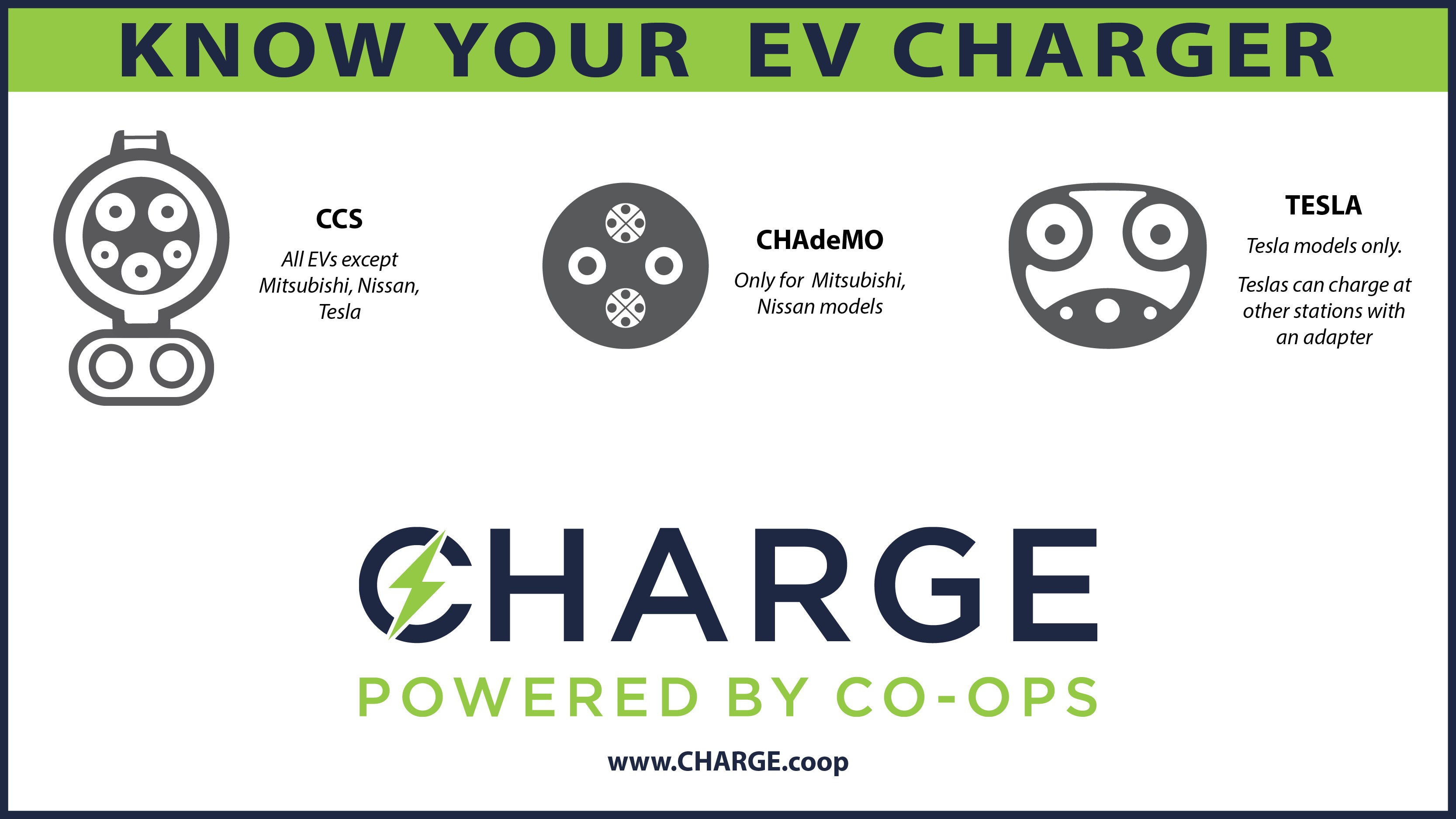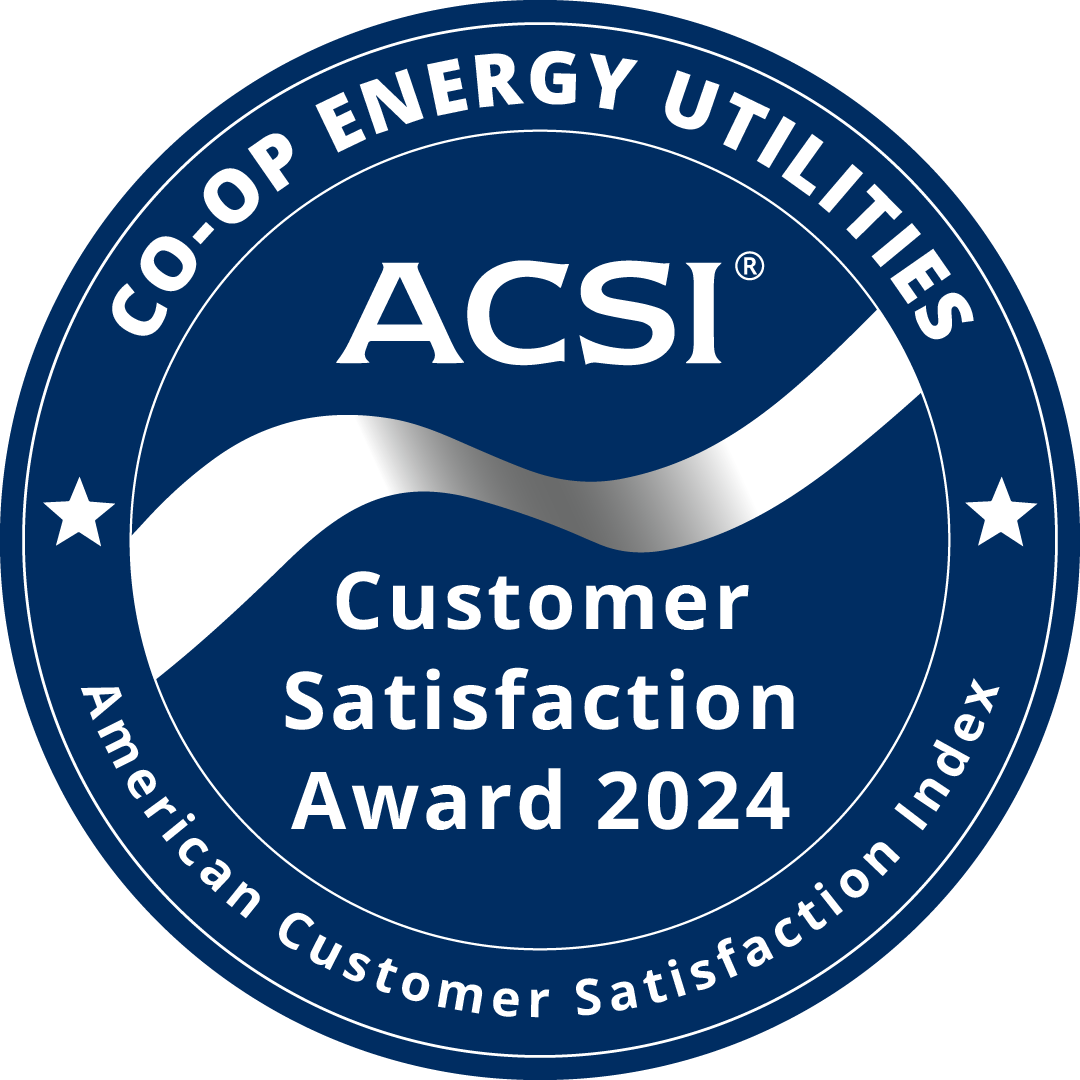ELECTRIC VEHICLES
Electric Vehicles (EVs) have been around for a very long time. Did you know that Henry Ford's wife drove an electric vehicle? They went out of favor for quite a period of time, but have made a serious comeback in recent years. As your trusted energy professional, it's our job to be able to help you make energy choices that make Energy Sense. If you have questions about EVs or charging them, feel free to give us a call and we'll do everything we can to help.
Are you in the market for an electric vehicle? Please call the office and speak to our Energy Specialist before you purchase an EV or charger. It's imperative to know your transformer and loading size before you install a charging system at your home. You can find our rebate form and other information below.
Electric Vehicle Basics
- EVs (also known as plug-in electric vehicles) derive all or part of their power from electricity supplied by the electric grid. They include AEVs and PHEVs.
- AEVs (all-electric vehicles) are powered by one or more electric motors. They receive electricity by plugging into the grid and store it in batteries. They consume no petroleum-based fuel and produce no tailpipe emissions. AEVs include Battery Electric Vehicles (BEVs) and Fuel Cell Electric Vehicles (FCEVs).
- PHEVs (plug-in hybrid electric vehicles) use batteries to power an electric motor, plug into the electric grid to charge, and use a petroleum-based or alternative fuel to power the internal combustion engine. Some types of PHEVs are also called extended-range electric vehicles (EREVs).
To get the most out of your plug-in electric vehicle (also known as an electric car or EV), you must charge it on a regular basis. Charging frequently maximizes the range of all-electric vehicles and the electric-only miles of plug-in hybrid electric vehicles. Drivers can charge at home, at work, or in public places. While most drivers do more than 80% of their charging at home and it is often the least expensive option, workplace and public charging can complement residential charging.
Types of Chargers
Charging your EV requires plugging into a charger connected to the electric grid, also called electric vehicle supply equipment (EVSE). There are three major categories of chargers, based on the maximum amount of power the charger provides to the battery from the grid:
- Level 1: Provides charging through a 120 V AC plug and does not require installation of additional charging equipment. Can deliver 2 to 5 miles of range per hour of charging. Most often used in homes, but sometimes used at workplaces.
- Level 2: Provides charging through a 240 V (for residential) or 208 V (for commercial) plug and requires installation of additional charging equipment. Can deliver 10 to 20 miles of range per hour of charging. Used in homes, workplaces, and for public charging.
- DC Fast Charge: Provides charging through 480 V AC input and requires highly specialized, high-powered equipment as well as special equipment in the vehicle itself. (Plug-in hybrid electric vehicles typically do not have fast charging capabilities.) Can deliver 60 to 80 miles of range in 20 minutes of charging. Used most often in public charging stations, especially along heavy traffic corridors.
Charging times range from less than 30 minutes to 20 hours or more based on the type of EVSE, as well as the type of battery, how depleted it is, and its capacity. All-electric vehicles typically have more battery capacity than plug-in hybrid electric vehicles, so charging a fully depleted all-electric vehicle takes longer.
*Source: U.S. Department of Energy
Types of Plugs
Most modern chargers and vehicles have a standard connector and receptacle, called the SAE J1772. Any vehicle with this plug receptacle can use any Level 1 or Level 2 EVSE. All major vehicle and charging system manufacturers support this standard, so your vehicle should be compatible with nearly all non-fast charging workplace and public chargers.
Fast charging currently does not have a consistent standard connector. SAE International, an engineering standards-setting organization, has passed a standard for fast charging that adds high-voltage DC power contact pins to the SAE J1772 connector currently used for Level 1 and Level 2. This connector enables use of the same receptacle for all levels of charging, and is available on certain models like the Chevrolet Spark EV. However, other EVs (the Nissan Leaf and Mitsubishi i-MiEV in particular) use a different type of fast-charge connector called CHAdeMO. Fortunately, an increasing number of fast chargers have outlets for both SAE and CHAdeMO fast charging. Lastly, Tesla’s Supercharger system can only be used by Tesla vehicles and is not compatible with vehicles from any other manufacturer. Tesla vehicles can use CHAdeMO connectors through a vehicle adapter.
*Source: U.S. Department of Energy


